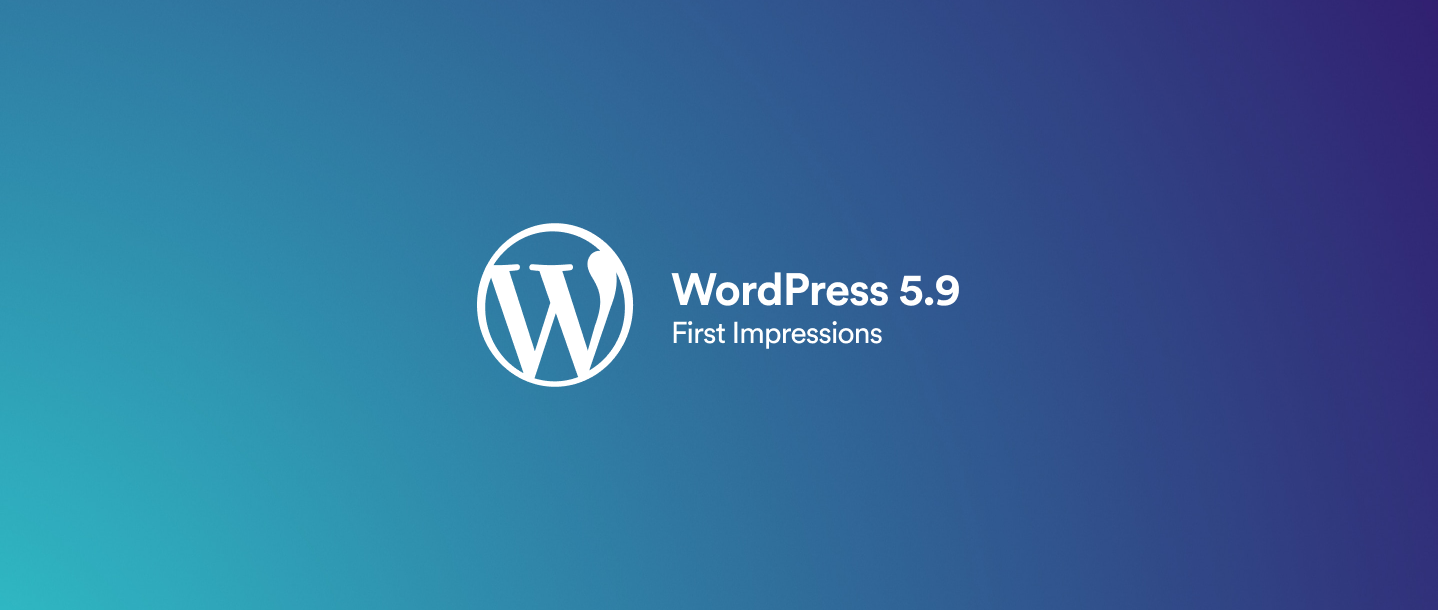Every major update to the WordPress platform has an impact on what we do and how we do it, however the upcoming 5.9 release is a particularly exciting one for us as it includes the remaining full site editing features. In short, these allow the page content and global elements of a site to be controlled within one user-friendly interface, which streamlines the production process.
Originally scheduled for a December 2021 release, the latest version of WordPress is now slated to be rolled out on 25 January 2022, and with its focus on blocks and intrinsic web design, refined editing flows for block themes, plus a new default theme, we’re sure it’s going to be worth the wait, particularly for less technical users.
Full site editing
The most notable element of the latest update is that it brings the block editor to the full screen, delivering a raft of new Gutenberg features that give users a new way to build themes, create templates, and style sites. This includes a much simpler and more intuitive interface for the global style options that were pushed out in 5.8, which enable you to define the variables that you want to use throughout an entire site – such as text colour, background colour, link colour, and typography – all in one place. The global style options also make it possible to define styles at a site level as well as block level, which means it’s easier than ever for users with little to no coding experience to consistently and globally update the visual elements of a site.
Within the updated user interface of 5.9, it’s possible to quickly define various templates across a site, including layouts for homepages, additional content pages, posts, and custom templates. It also offers the ability to edit template parts, which is very similar to reusable blocks as it enables you to define different headers, footers, primary navigation menus, banners, and other general template parts. As a result, it’s pretty straightforward to set up lots of different styles of pages within a single theme, giving content creators a much wider array of design choices.
The power of this new functionality is perfectly demonstrated by the latest default WordPress theme – Twenty Twenty-Two – which is the most flexible default theme to date, and acts as a great introduction for those who are less familiar with template editing and global styles. You can read more about the theme here.
Internationalisation
In line with its mission to democratise publishing beyond just English-speaking countries, WordPress is now translated into an incredible total of 71 varied languages, and the 5.9 update also brings that addition of a new language switcher on the login screen. While it’s technically been possible to control the language of the login screen since the introduction of a hidden feature in 4.9, the new switcher is a clear and accessible dropdown that makes it quick and easy for users to select their desired language on the login, password reset and registration screen.
UX improvements
In addition, the update includes a number of user improvements for both content creators and consumers, with two of the most prominent being the addition of drag and drop functionality within List View, and performance enhancements to lazy-load images. Although lazy-loading has been available in WordPress since the 5.5 release back in August 2020, the implementation wasn’t scoring as highly as it could’ve been in terms of the Largest Contentful Paint (LCP) metric – a widely-recognised UX measure that became one of Google’s search engine ranking factors in early 2021. This has been remedied in 5.9, resulting in a significantly faster page load and boosted LCP performance.
In summary, the 5.9 update is certainly a powerful one, and it includes a good number of features that will be utilised by our teams on a day to day basis. On a wider scale, it brings block editing to the masses, which we believe that – based on our extensive experience with Gutenberg – will mean faster, more efficient site builds on WordPress, with reduced coding requirements and much greater design flexibility.
For a more technical breakdown of the 5.9 update, click here to head over to the WordPress site.


